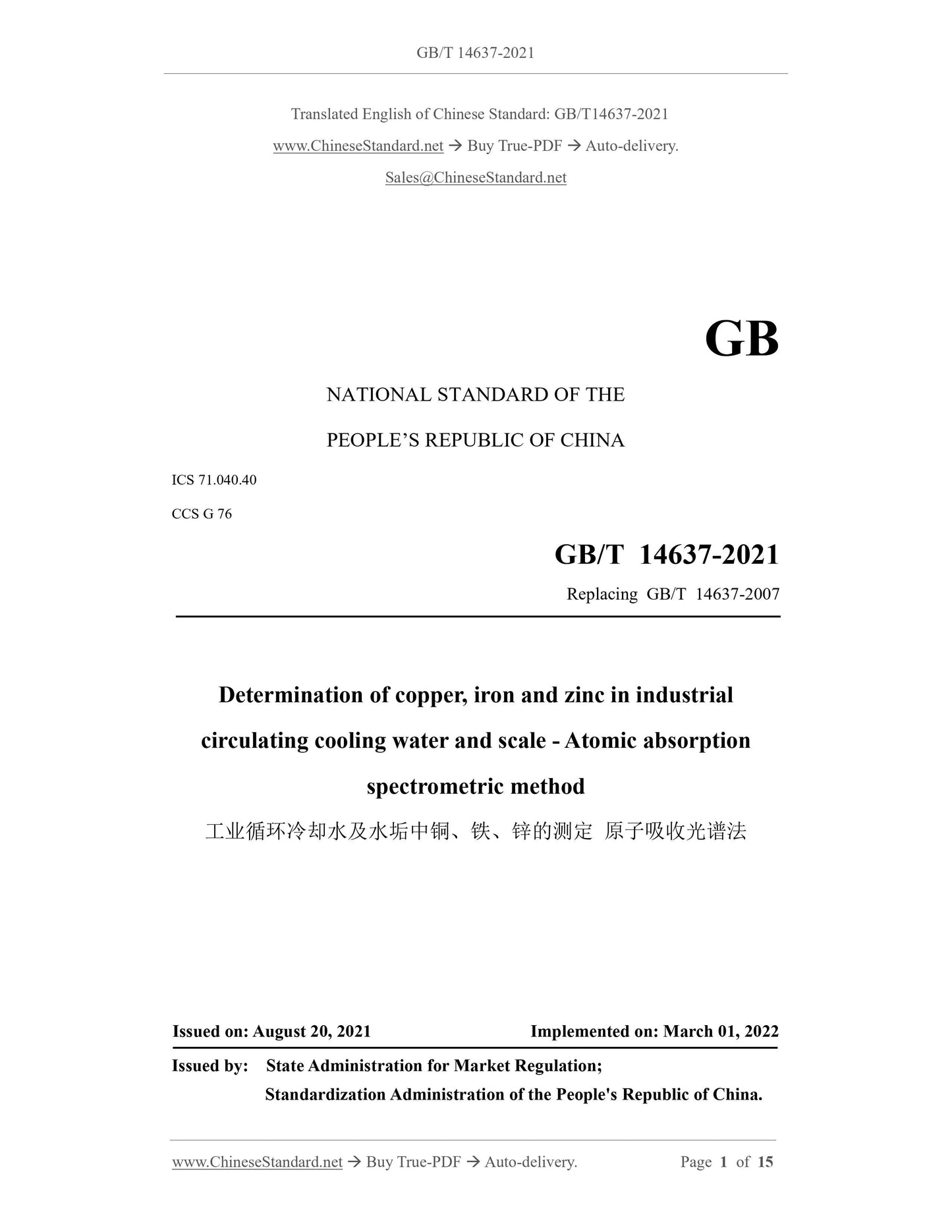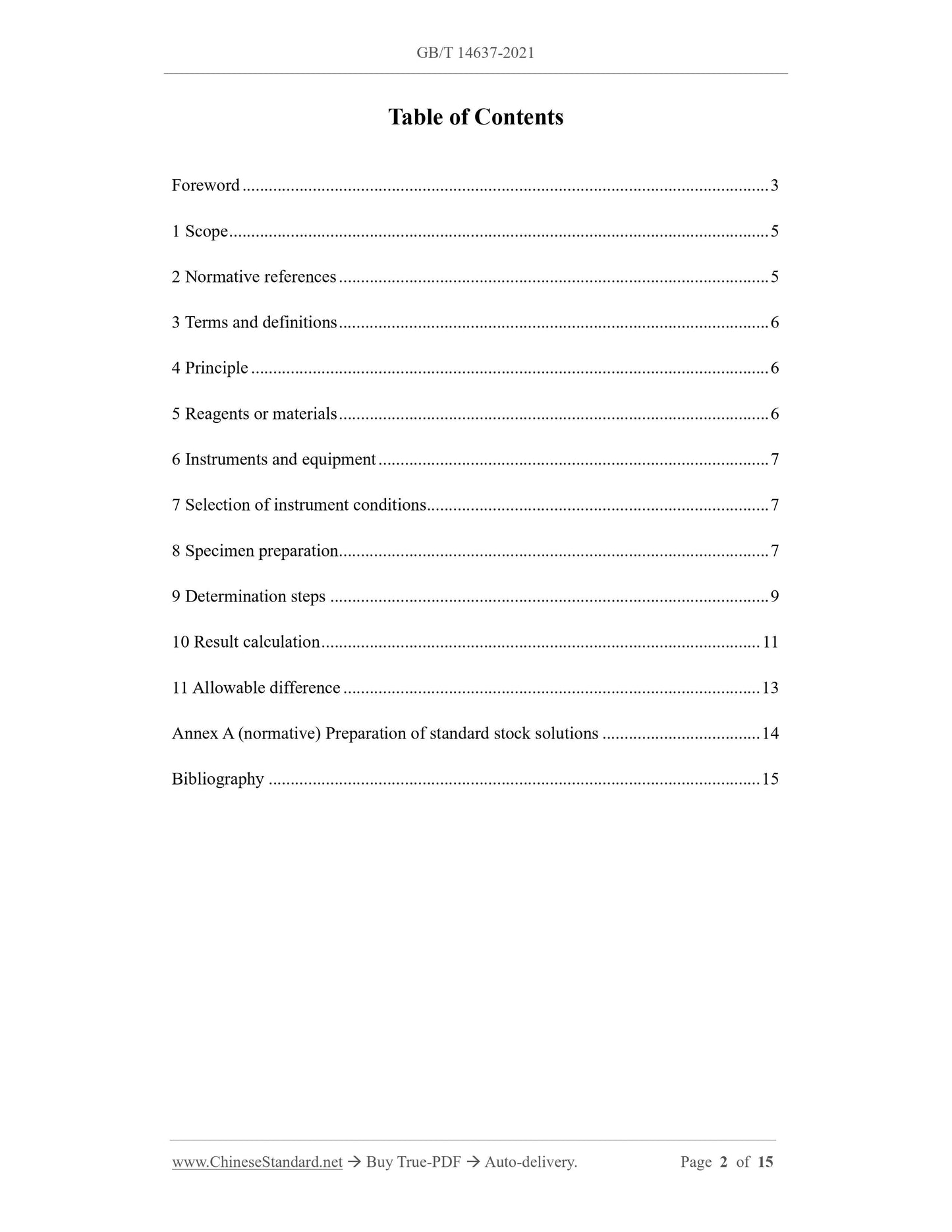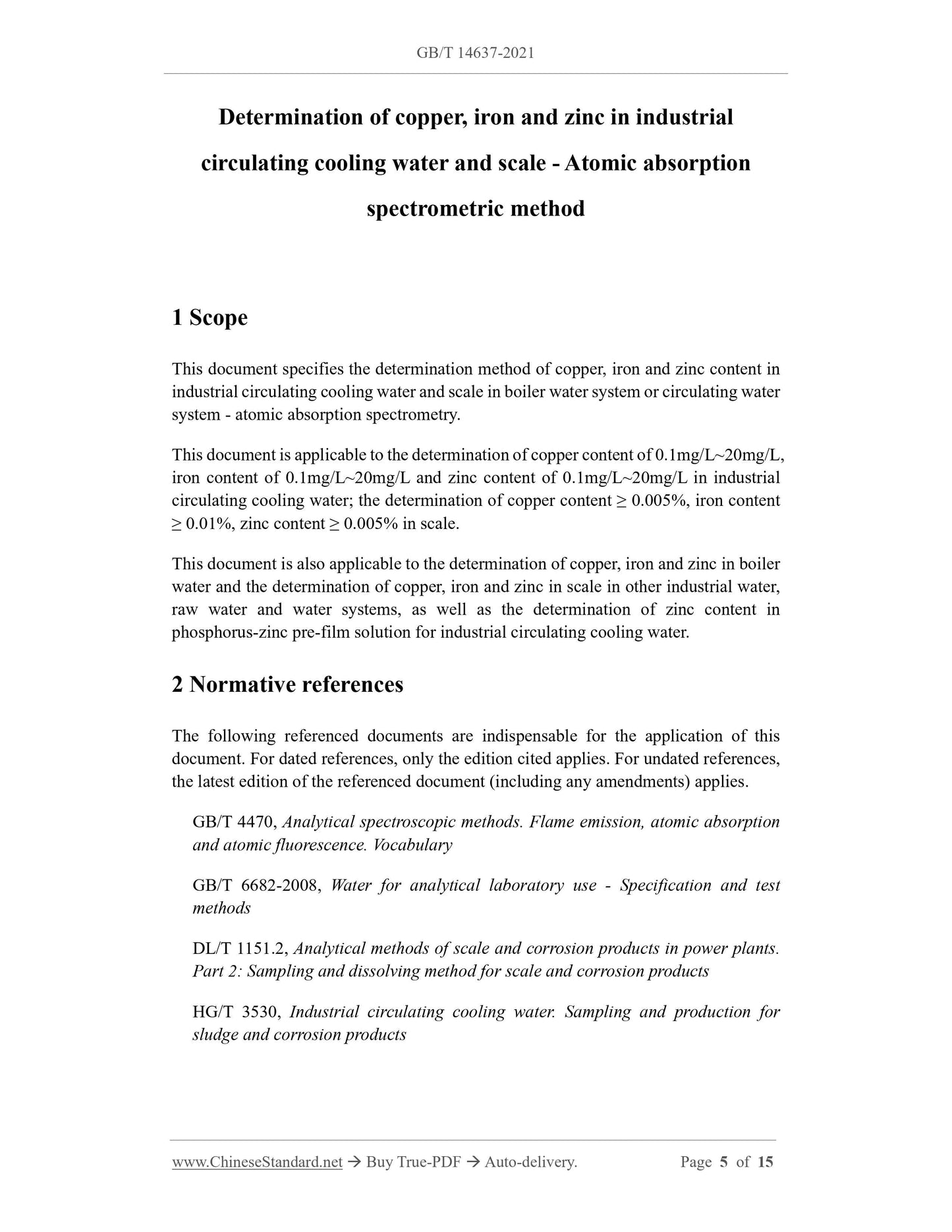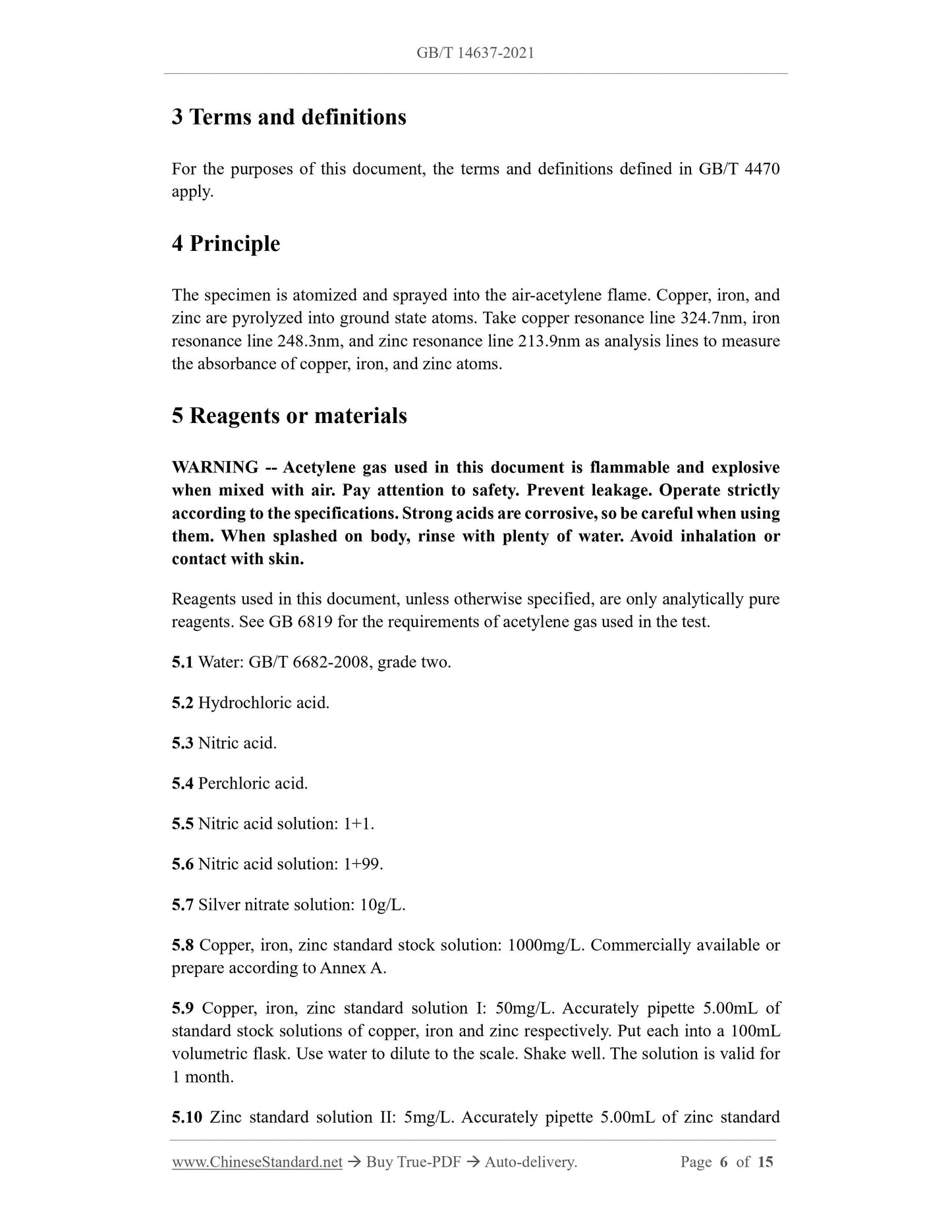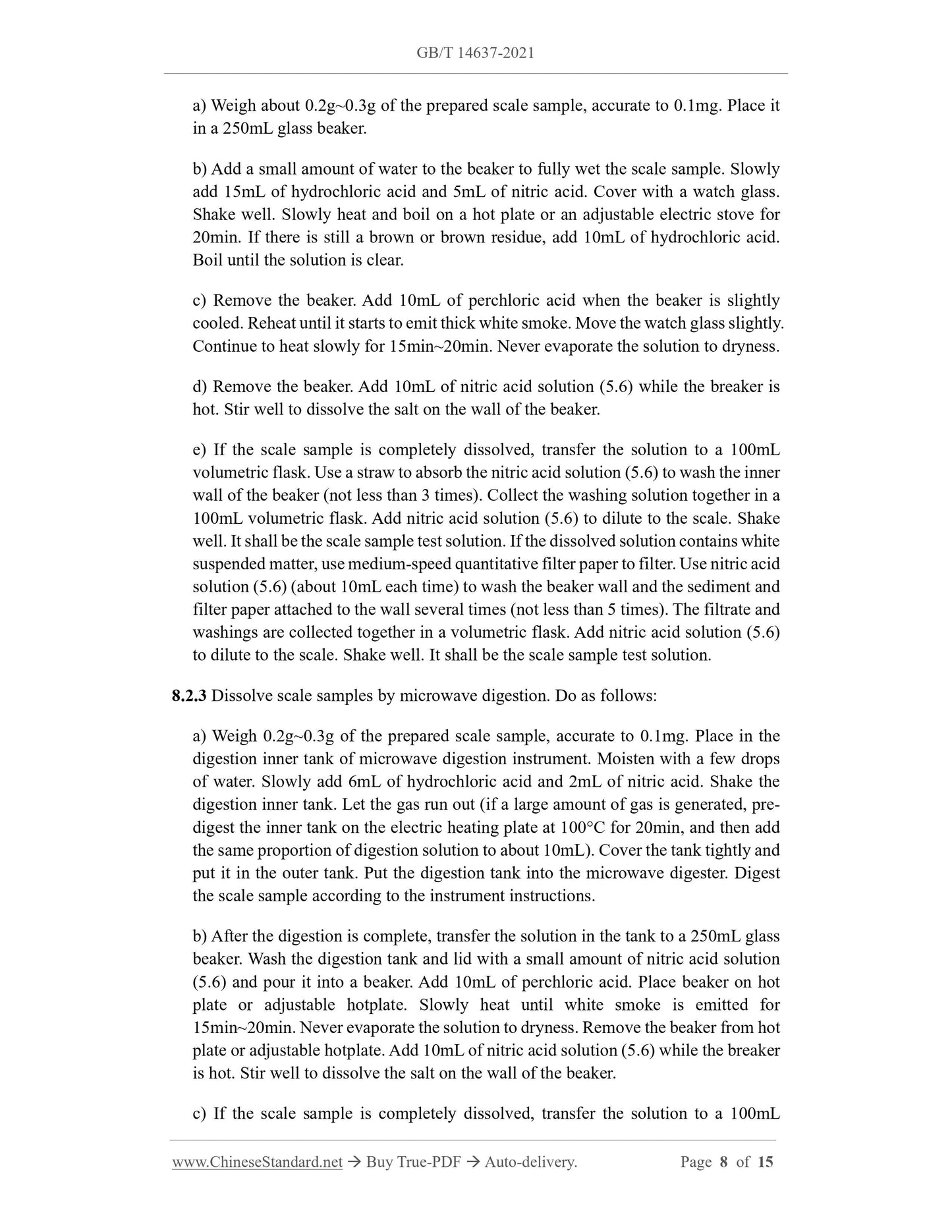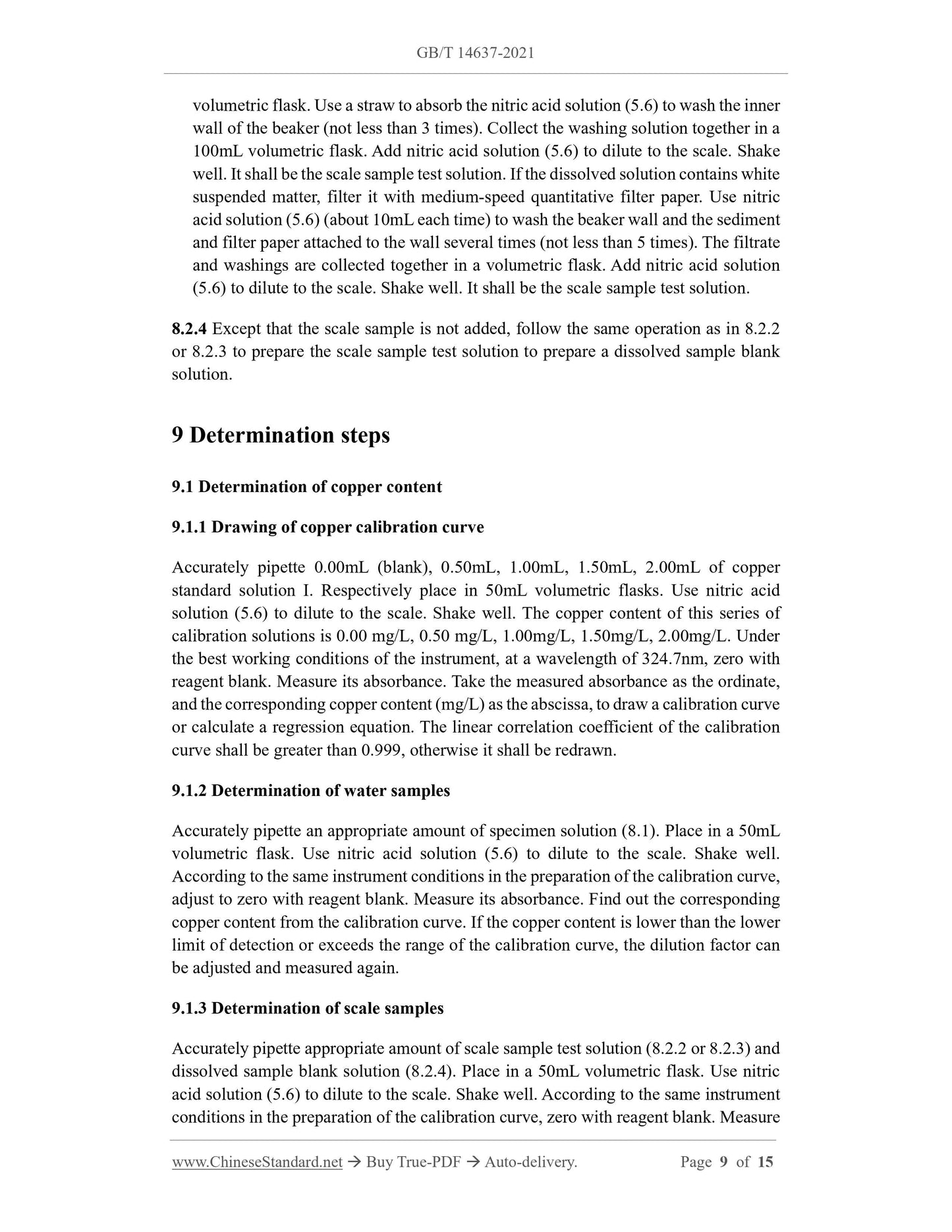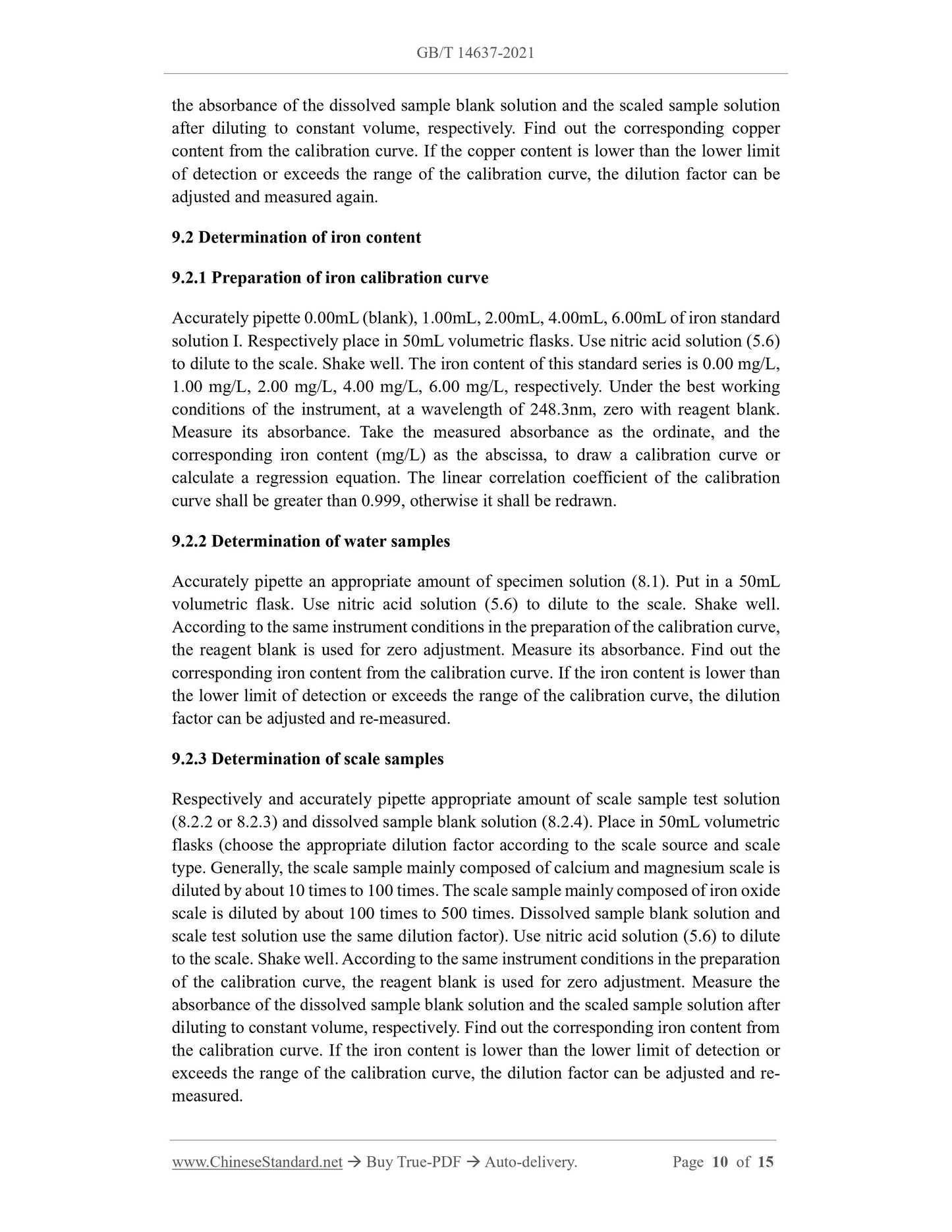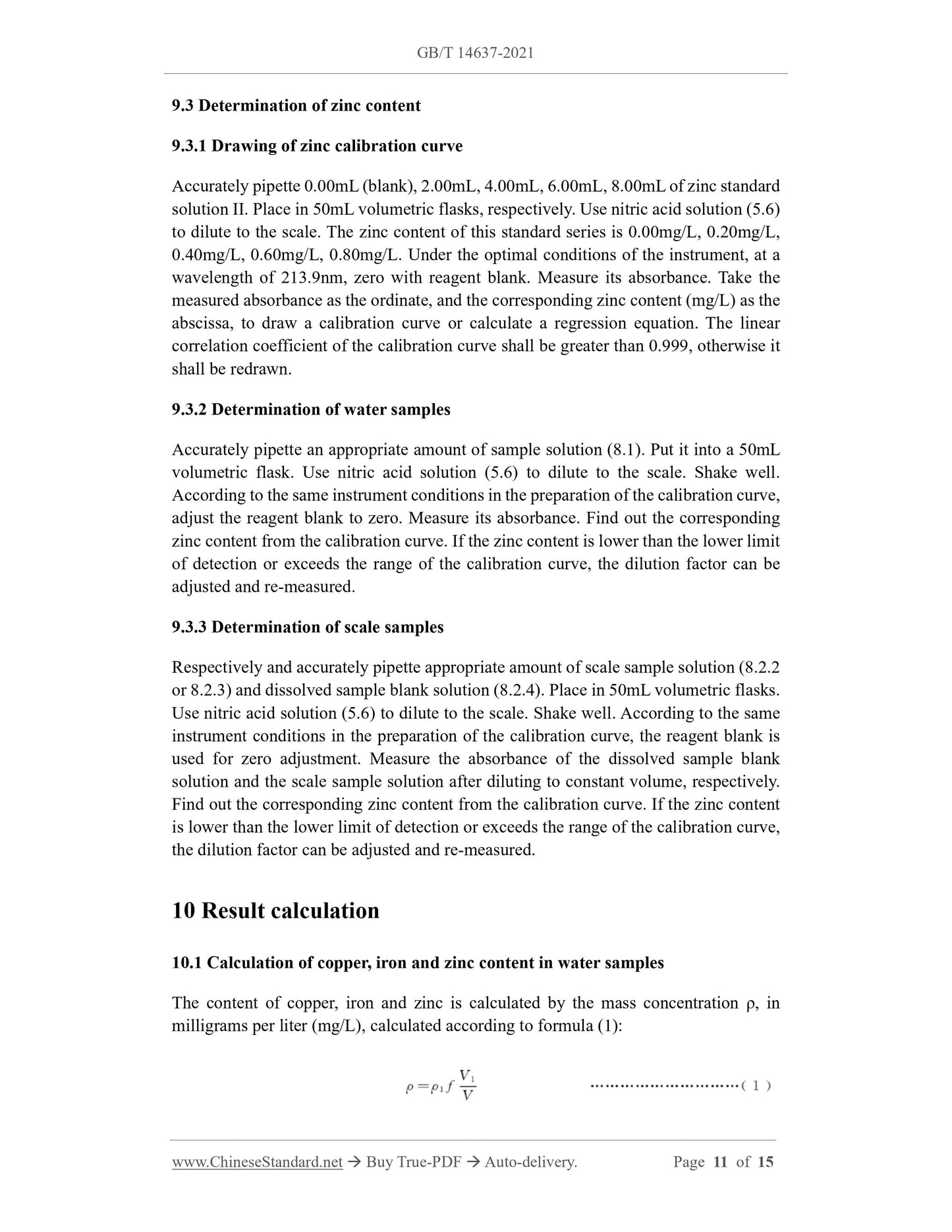1
/
of
8
www.ChineseStandard.us -- Field Test Asia Pte. Ltd.
GB/T 14637-2021 English PDF (GB/T14637-2021)
GB/T 14637-2021 English PDF (GB/T14637-2021)
Regular price
$170.00
Regular price
Sale price
$170.00
Unit price
/
per
Shipping calculated at checkout.
Couldn't load pickup availability
GB/T 14637-2021: Determination of copper, iron and zinc in industrial circulating cooling water and scale - Atomic absorption spectrometric method
Delivery: 9 seconds. Download (and Email) true-PDF + Invoice.Get Quotation: Click GB/T 14637-2021 (Self-service in 1-minute)
Newer / historical versions: GB/T 14637-2021
Preview True-PDF
Scope
This document specifies the determination method of copper, iron and zinc content inindustrial circulating cooling water and scale in boiler water system or circulating water
system - atomic absorption spectrometry.
This document is applicable to the determination of copper content of 0.1mg/L~20mg/L,
iron content of 0.1mg/L~20mg/L and zinc content of 0.1mg/L~20mg/L in industrial
circulating cooling water; the determination of copper content ≥ 0.005%, iron content
≥ 0.01%, zinc content ≥ 0.005% in scale.
This document is also applicable to the determination of copper, iron and zinc in boiler
water and the determination of copper, iron and zinc in scale in other industrial water,
raw water and water systems, as well as the determination of zinc content in
phosphorus-zinc pre-film solution for industrial circulating cooling water.
Basic Data
| Standard ID | GB/T 14637-2021 (GB/T14637-2021) |
| Description (Translated English) | Determination of copper, iron and zinc in industrial circulating cooling water and scale - Atomic absorption spectrometric method |
| Sector / Industry | National Standard (Recommended) |
| Classification of Chinese Standard | G76 |
| Word Count Estimation | 10,139 |
| Issuing agency(ies) | State Administration for Market Regulation, China National Standardization Administration |
Share
